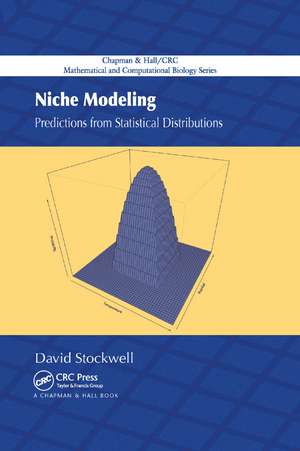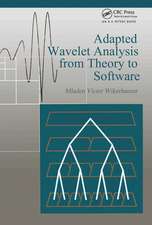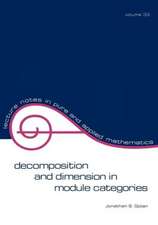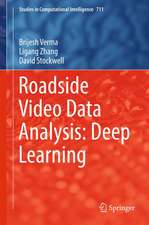Niche Modeling: Predictions from Statistical Distributions
Autor David Stockwellen Limba Engleză Paperback – 2 oct 2019
Above all, successful niche modeling requires a deep understanding of the process of creating and using probability. Off-the-shelf statistical packages are tailored exactly to applications but can hide problematic complexities. Recipe book implementations fail to educate users in the details, assumptions, and pitfalls of analysis, but may be able to adapt to the specific needs of each study. Examining the sources of errors such as autocorrelation, bias, long term persistence, nonlinearity, circularity, and fraud, this seminal reference provides an understanding of the limitations and potential pitfalls of prediction, emphasizing the importance of avoiding errors.
| Toate formatele și edițiile | Preț | Express |
|---|---|---|
| Paperback (1) | 487.79 lei 6-8 săpt. | |
| CRC Press – 2 oct 2019 | 487.79 lei 6-8 săpt. | |
| Hardback (1) | 891.22 lei 6-8 săpt. | |
| CRC Press – 15 dec 2006 | 891.22 lei 6-8 săpt. |
Preț: 487.79 lei
Preț vechi: 573.87 lei
-15% Nou
Puncte Express: 732
Preț estimativ în valută:
93.34€ • 97.71$ • 77.23£
93.34€ • 97.71$ • 77.23£
Carte tipărită la comandă
Livrare economică 07-21 aprilie
Preluare comenzi: 021 569.72.76
Specificații
ISBN-13: 9780367389703
ISBN-10: 0367389703
Pagini: 224
Dimensiuni: 156 x 234 x 13 mm
Greutate: 0.41 kg
Ediția:1
Editura: CRC Press
Colecția Chapman and Hall/CRC
ISBN-10: 0367389703
Pagini: 224
Dimensiuni: 156 x 234 x 13 mm
Greutate: 0.41 kg
Ediția:1
Editura: CRC Press
Colecția Chapman and Hall/CRC
Public țintă
Professional Practice & DevelopmentCuprins
Preface. Functions. Data. Spatial. Topology. Environmental Data Collections. Examples. Bias. Autocorrelation. Non-Linearity. Long Term Persistence. Circularity. Fraud. References.
Descriere
Through theory, applications, and examples of inferences, this book shows how to conduct and evaluate ecological niche modeling (ENM) projects in any area of application. It features a series of theoretical and practical exercises in developing and evaluating ecological niche models using a range of software supplied on an accompanying CD. These cover geographic information systems, multivariate modeling, artificial intelligence methods, data handling, and information infrastructure. The author then features applications of predictive modeling methods with reference to valid inference from assumptions. This is a seminal reference for ecologists as well as a superb hands-on text for students.






























